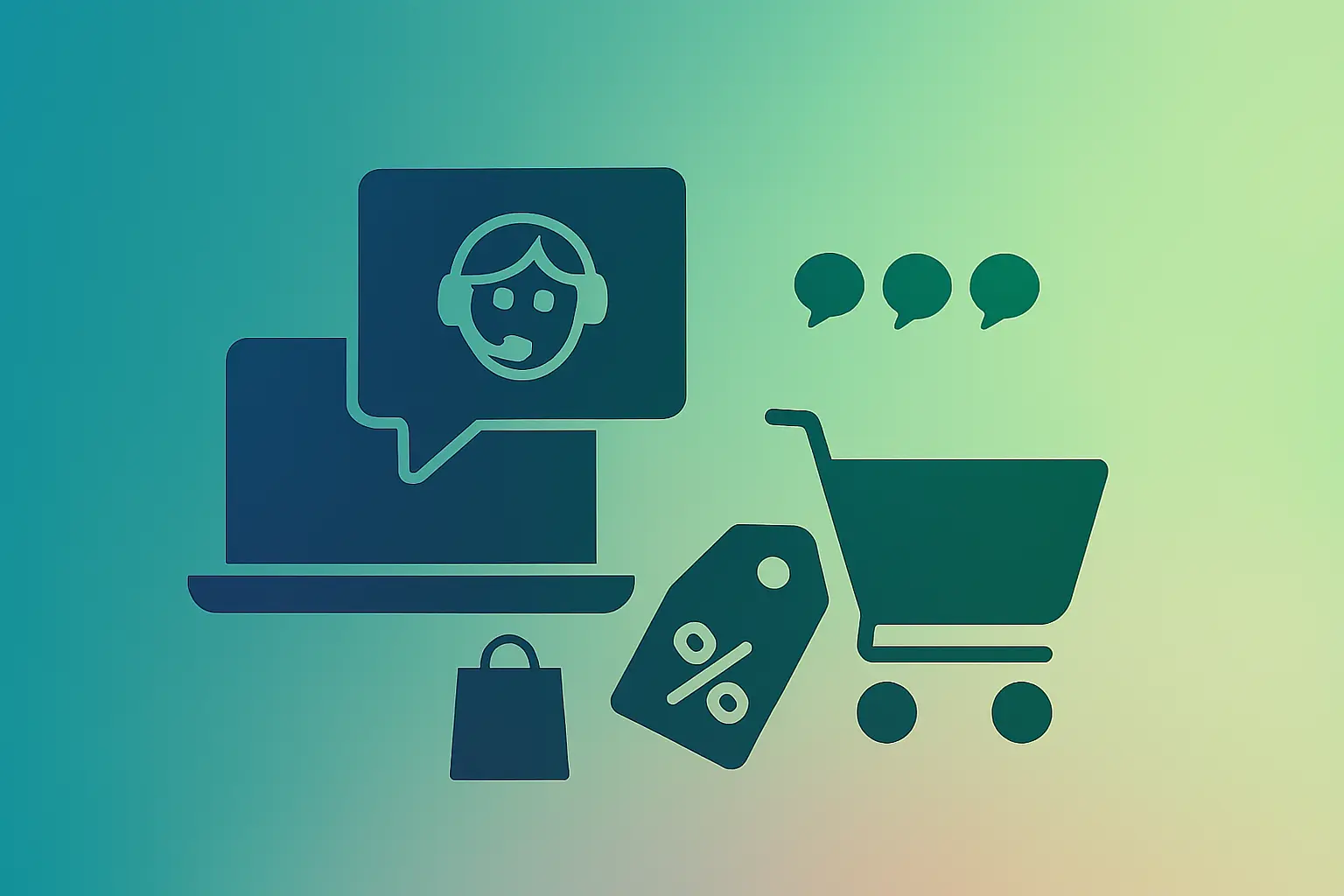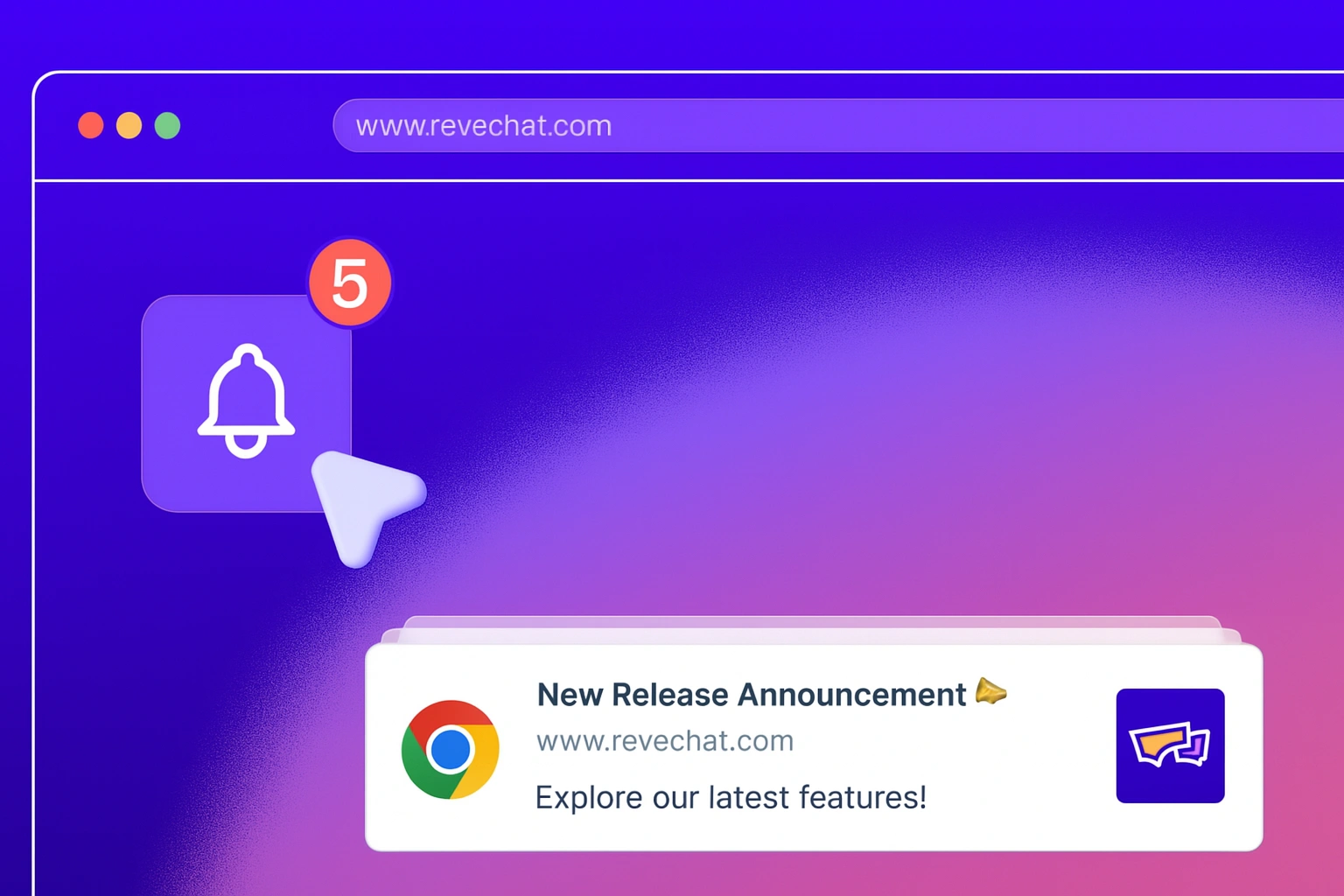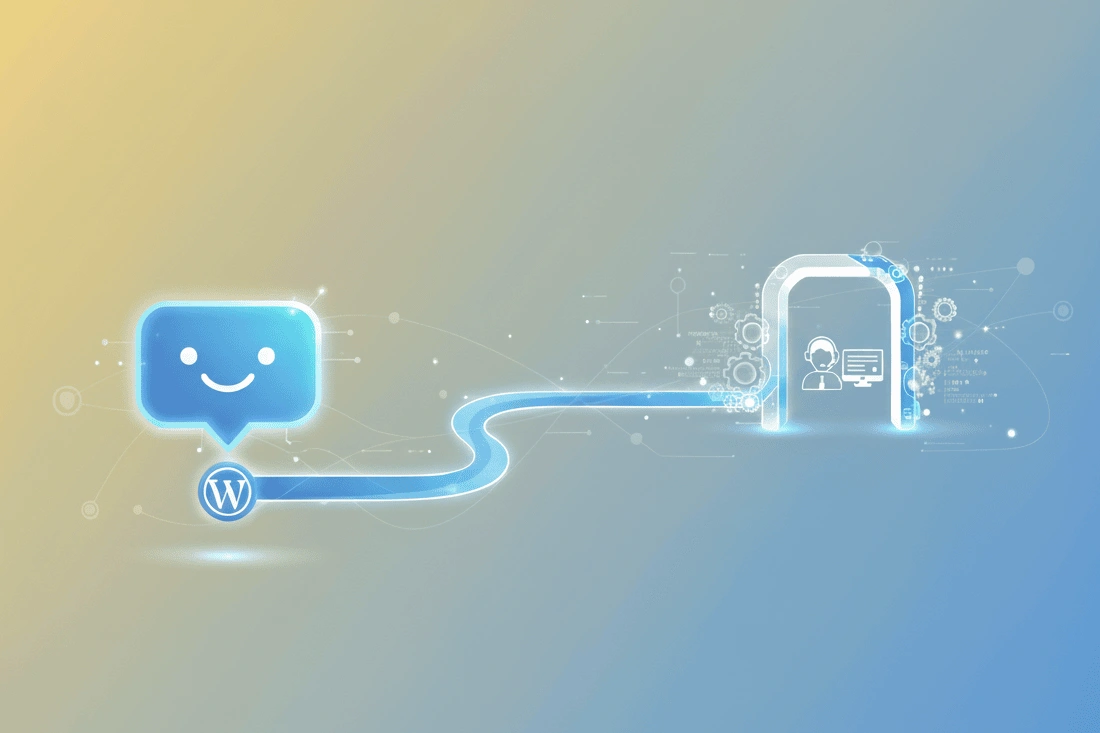10 Common Types of Customer Needs & Examples
- January 22, 2020
- 17 mins read
- Listen

Most businesses focus on innovations but fail to align their brand with customer needs.
Customer-centric companies are 60% more profitable than companies that don’t focus on customers.
Being customer-focused helps in understanding customers better and aligning products and services to create great value. You can not persuade consumers without knowing what they are looking for.
Identifying and meeting customer needs should be the focal point of every business’s efforts to build a solid customer base.
Once you have clear knowledge about the same, you can further use it to persuade your customers. We have outlined the techniques to identify customer needs, methods, and analysis to win more customers.
What Is Customer Need?
Customer needs are defined as the influential factors that trigger them to buy your product or service. To identify customer needs, it is important to understand the reasons behind their decision-making.
To understand customer needs better, it’s very important to know who your customers are. By defining your target audience and segmenting them based on their industry or other attributes, you not only get a clear view of what’s your selling proposition but also identify their needs.
Here are four simple steps to follow to meet customer needs successfully.
- Identify – Follow customer needs analysis via surveys, interviews, focus groups, or social listening.
- Distribute – Once you have identified the needs, you can distribute it across the right teams and departments.
- Create – Tailor product features, and create detailed content that speaks about customer needs.
- Collect – Obtain customer feedback regularly to learn how your efforts meet their expectations.
Note: Customer experience is an essential part of meeting customer needs. Learn more about how you can build a successful customer experience strategy to achieve your goals.
What is a Customer Needs Analysis?
It is a systematic process of gathering and evaluating information about customers’ requirements, preferences, and expectations to better understand and meet their needs effectively. Customer needs analysis involves analyzing various aspects of customer behavior, demographics, psychographics, and feedback to identify patterns and insights. These can inform decision-making and strategy development.
Here’s a breakdown of the key components of a customer needs analysis:
- Data Collection: In this stage, you’ll have to gather relevant data from various sources such as customer surveys, feedback forms, online reviews, social media interactions, and sales data.
- Segmentation: After collecting customer data you’ll have to divide your customer base into distinct segments based on common characteristics such as demographics, psychographics, behavior, or needs-based segments.
- Identify Needs and Pain Points: Now it’s time to analyze the data to identify common needs, desires, and pain points among different customer segments.
- Gap Analysis: Compare the current state of your offerings with the identified customer needs and pain points to identify any gaps or areas where your offerings fall short.
- Solution Development: In this stage, you’ll have to develop strategies and initiatives to address the identified gaps and meet customer needs more effectively. This may involve product/service enhancements, process improvements, or adjustments to pricing and packaging.
Why Is It Important To Identify Customer Needs?
Businesses are taking strides to understand customer needs and meet them as early as possible to align with internal teams.
76% of customers expect companies to understand their needs.
Businesses operate under a cyclical process of anticipating and meeting customer needs. You can have quick and positive results. Before your business promotions or product launches, it is vital to know your customer’s needs and wants. Conducting market research can greatly help you understand your potential customers.
The more you know about your customers, the better you can define your brand positioning around their needs and help your business in the following ways:
- Provide faster solutions – One of the common things customers want is real-time support. By identifying the needs of your customers, you can provide faster and more effective support.
- Improve your products & services – Customer research helps understand the motives behind the buying process. You can learn about the areas you are missing and create an effective USP. The consumer marketing insights can be used to enhance the products or services to satisfy customer needs.
- Reduce the number of support tickets – Building products and services considering the needs of the target customers ensures effective solutions to customer issues.
How to Identify Customer Needs?
How to understand customer needs? Identifying customer needs includes deep research across your industry and asking your customers lots of specific questions. It is very important to gather in-depth details from your customers through regular communication and be sure you can deliver on their individual needs.
Understanding customer psychology can act as a catalyst for your business to deliver better customer service, build long-lasting relationships, and maintain a consistent source of revenue.
The key way to anticipate is through a thorough analysis of the needs and wants of customers.
How to Meet Customer Needs?
It involves understanding what customers want and delivering products, services, and experiences that fulfill those wants effectively. Here are some steps to help you meet customer needs:
- Understand Your Customers: You should invest time in understanding your target audience. You can gather data through surveys, feedback forms, social media listening, and analytics to understand their preferences, pain points, and expectations.
- Segment Your Audience: Try to recognize that not all customers have the same needs. You need to segment your audience based on factors like demographics, psychographics, behavior, and preferences. This allows you to tailor your offerings more effectively.
- Develop Quality Products/Services: You can create high-quality products or services that address specific needs or solve problems for your target market. Focus on features that add value and differentiate your offerings from competitors.
- Provide Excellent Customer Service: You have to offer exceptional customer service at every touchpoint. You should train your staff to be knowledgeable, helpful, and responsive to customer inquiries, concerns, and feedback.
- Personalize the Experience: You’ll have to use customer data to personalize the customer experience. Don’t forget your marketing messages, product recommendations, and service interactions to match individual preferences and behavior.
- Communicate Effectively: Always keep customers informed about your products, services, and any updates or changes that may affect them. You need to use clear, transparent communication to manage expectations and build trust.
- Seek Feedback Continuously: Create an environment to encourage customers to provide feedback on their experiences with your brand.
What is Customer Requirement?
Customer requirements are the particular demands, anticipations, and preferences of an individual or group of individuals with a good, service, or solution. Any company or organization that wants to provide goods or services that satisfy clients and acquire a competitive edge in the market must meet these objectives.
Customer Need vs. Customer Requirement
We sometimes use the two words need and requirement without understanding the difference. In a business setting, needs and requirements are two different things. Let’s see some differences between customer needs and customer requirements:
| Customer Need | Customer Requirement |
| Customer needs are the bridge between the organization and the customer. | Customer requirements are a kind of denominator by which businesses measure whether customers are happy or not. |
| The fundamental aspirations or issues that consumers attempt to solve with a good or service are referred to as customer needs. These needs are what prompt buyers to think about a certain solution in the first place. In contrast to wants, needs typically describe the “what” rather than the “how.” | An expressly stated necessity is referred to as a requirement. Good specifications precisely outline all the specifics of what the client is seeking so that both the customer and the business |
| Since most people in India are vegetarians, McDonald’s makes vegetarian hamburgers there. They don’t make beef burgers or anything else associated with beef. As a result, they choose the product based on the needs of the inhabitants of the area. To satisfy customer needs, McDonald’s always tries to meet the customer’s desires. | When customers visit any restaurant, their main requirement is that they can get good food at the lowest possible price. Customers have always been attracted to the sales pricing that McDonald’s offers. The strong purchasing power is maintained for a longer period because this has made it possible for customers to afford their items. |
What Is The Customer Needs Analysis?
It refers to a comprehensive analysis that can benefit your business by helping you understand what value your customers want from your products or services. It provides valuable insights about your target audience that can be inculcated into the brand positioning to make sure it delivers great customer value.
Effective customer needs analysis depends mainly on two factors. Firstly, to create customer personas and identify what customer inputs are needed to create breakthrough products, and second, to know how to capture customer inputs and feedback.
Conducting customer research to understand the factors that influence purchasing decisions can be done by:
- Customer interviews – It is one of the most direct ways of collecting customer data and input. You can interact directly with customers who are using your product or who have chosen to buy it. It is considered more reliable than other ways of acquiring inputs.
- Focus groups – Focus groups comprise a small group, and the focal point is a specific product or topic. The groups emphasize qualitative or quantitative surveys because they provide more opinions and motivations.
- Surveys – The analysis done through surveys helps businesses get a picture of their position in the market in terms of fulfilling the needs of their target customers.
The case study video speaks about the importance of identifying customer needs:
Types of Customer Needs
Businesses ought to understand customer needs, as it is vital to match the competitive marketplace. Broadly, customer needs are about delivering a better experience by exceeding their expectations. When you anticipate what your customers want, you can create content, and expand your product features or services to meet those needs. However, customer needs can be bifurcated into two verticals.
1. Functional Needs
These are the basic requirements a customer has for a product or service to fulfill its intended purpose. For example, a customer might need a smartphone for making calls, sending texts, and accessing the internet.
2. Emotional Needs
These are related to how a product or service makes a customer feel. Customers often seek products or services that evoke positive emotions such as happiness, security, or excitement. For instance, a luxury car may fulfill a customer’s need for status or prestige.
3. Social Needs
Customers may have needs related to their social interactions or relationships. This could involve products or services that help them connect with others, belong to a group, or maintain relationships. Social media platforms fulfill this need by allowing users to interact with friends and family.
4. Convenience Needs
They often seek products or services that make their lives easier or more convenient. This could include factors such as accessibility, ease of use, and time-saving features. For example, a grocery delivery service fulfills the need for convenience by saving customers a trip to the store.
5. Psychological Needs
These are related to a customer’s mental and emotional well-being. Customers may have psychological needs for self-expression, personal growth, or self-esteem. Products like fashion items or self-help books can fulfill these needs.
6. Economic Needs
They have needs related to their financial well-being, such as finding products or services that offer value for money or help them save money. Discount offers or budget-friendly products cater to these needs.
7. Environmental Needs
With increasing awareness of environmental issues, customers may seek products or services that are eco-friendly or sustainable. This could include products made from recycled materials or services that minimize environmental impact.
8. Cultural Needs
Customers may have needs influenced by their cultural background, beliefs, or values. Businesses must understand cultural nuances to effectively cater to these needs. For example, dietary preferences or religious considerations may impact food choices.
9. Safety and Security Needs
They have a fundamental need for safety and security, both physically and emotionally. Products like home security systems or insurance services fulfill these needs by providing protection and peace of mind.
10. Health and Wellness Needs
Customers increasingly prioritize products and services that contribute to their physical and mental well-being. This could include fitness equipment, healthy food options, or mindfulness apps.
Good Examples to Meet Customer Needs
Addressing customer needs is critical for any business that focuses on customer retention to create good examples. Because, as important as the discovery phase is, knowledge about what your customer needs from you is only as good as the way you use it.
Let us discuss the best practices for meeting customer needs and building stronger relationships.
1. Deliver Quality Customer Support
Not always “good product quality” is what customers look for. Customers prefer brands that offer real-time support. So, your support teams should focus on providing a frictionless service experience and improving customer handoff.
66% of customers believe that valuing their time is the most important thing in any online customer experience. Resolving customer queries faster is a cornerstone of good customer service.
When customers get exactly what they need, there is an increase in satisfaction. If you focus on putting extra effort into exceeding customer expectations, it will certainly be worthwhile. You can delight your customers with excellent service.
How can you enhance the quality of your customer support?
- Provide real-time support – You can connect with your customers with live chat to deliver real-time assistance for sales and support queries.
- Use live assistance solutions – By using tools like co-browsing and video chat, you can provide faster solutions by reducing the number of touchpoints.
- Automate your customer support – Use a chatbot template for information collection to engage with customers 24×7 and answer their simple queries promptly.
REVE Chat is a great omnichannel customer communication platform that helps you learn about your client’s expectations. Sign up with REVE Chat and know your needs and deliver the support they expect.
2. Map Your Customer Journey
A great way to meet customer needs is by understanding the different customer touchpoints and how they interact with your business across these contact points. You can map your customer’s journey to get a visualization of the process they go through when engaging with your products or services.
Mapping journeys include multiple phases and touchpoints the customer goes through, from prospect to loyal customer. It helps you streamline fragmented efforts and identify points of friction and opportunities for improvement.
Identifying and meeting customer needs throughout the whole journey is all about providing a delightful experience that will further cultivate loyalty.
3. Measure Customer Satisfaction Regularly
To know how happy your customers are with your overall business you need to measure it regularly. Choosing the right communication channels and customer satisfaction metrics is crucial.
The key KPIs are customer satisfaction score (CSAT), net promoter score (NPS), and customer effort score (CES) to help in measuring performance, monitoring, and analyzing satisfaction levels in the overall customer journey.
How does measuring customer satisfaction help you meet your customers’ needs?
- It provides deep insights into your overall business performance. Based on that, you can improve in the areas where you are doing well and have loopholes.
- CSAT scores can help team leaders identify coaching opportunities to improve agent performance and give agents visibility into their individual performance to encourage self-correcting behavior.
Based on the inferences, you can restructure your products and services to reduce customer churn by boosting the satisfaction rate.
4. Be Consistent In Customer Communication
Inconsistent customer service is among the top frustrations reported by customers. If your representatives are unable to deliver consistent assistance, there are chances that consumers will feel confused and alienated.
It takes no time to create a negative impression on your customers and shows that your business strategies are not organized. You can meet your customers’ requirements if you make the right efforts to understand the goals and capabilities of the company.
Use every possible strategy for effective customer service communication.
Here are some strategies you can follow:
- Focus on building an omnichannel customer service strategy to deliver consistent support across all channels.
- Train your support team in customer service etiquette to meet customer needs effectively.
- Provide real-time assistance to your customers with live customer engagement tools.
Note: When communicating with your customers, make sure your brand voice and brand image are consistent. If you are communicating with your customers across multiple channels, you have to retain your unique voice so your customers will understand your message thoroughly.
5. Develop A Customer-Centric Culture
One great way to meet your customer’s needs is to create a company culture that is focused on customer experience at every touchpoint.
The customer experience (CX) is the major differentiator for every business, but creating a great CX isn’t that easy. It includes visualizing interactions through every touchpoint from the customer’s perspective: What are the expectations, what makes sense, and where do you have a chance to surprise and delight someone?
And all these moments won’t happen at once.
What can be done to build a customer-centric culture?
- Align your company culture to focus on the customer experience first. Your employees make or break most customer touchpoints, so be clear on your brand’s values and what makes the experience delightful.
- Empower your support representatives to be proactive, thoughtful, and creative in making it practically happen.
6. Enhance The USP of Your Product
Every business needs a reason for its customers to buy from them over their competitors, which is known as a Unique Selling Proposition (USP). Your USP can change depending on the changes in your business and for different types of customers.
A good product is anything that can be offered to a market for attention, acquisition, or consumption that satisfies customer needs. Product quality is the characteristic that bears on its ability to satisfy implied customer needs. The USP of your product can be an effective way to differentiate your brand when customers are making their buying decisions.
The product quality speaks for itself. If your products are built around helping customers resolve their issues faster, it will attract them and keep them coming back.
To maintain a smooth process, you need to follow certain tips:
- Conduct customer research to identify customer needs and analyze them to serve them much better.
- Ask for customer feedback and categorize it further to implement improvements to the brand value to match customer needs.
7. Ask Customer Feedback
Customer feedback is a vital ingredient for the success of every business. It helps to enhance your products and services to better suit the needs of your customers. This will then increase the chances of people purchasing your improved products or services.
You must always choose the right time to ask for honest customer feedback like after the chat session. Further, the feedback can be analyzed to generate valuable insights. The insights can help recreate better products as per their needs.
Essentially, once you receive customer feedback, you need to follow certain steps that give you opportunities to meet customer needs.
- Analyze the data using quality customer feedback analysis tools and according to internal & external customers’ needs and expectations, and enhance it.
- Figure out the gaps between your business and customers. Set up new plans and strategies to reduce the gaps.
- Make all the team members part of the discussion and give their views about customer needs and wants.
Final Thoughts
When you start prioritizing customer needs, you need to successfully identify them in your products and services. Customers are highly satisfied When they can relate your brand to their needs. Being able to deliver a great experience grows your base of loyal customers.
Having good knowledge of customer needs and wants not only helps to add constructive value but also levels up the overall brand’s recognition. It gives your business a competitive advantage and keeps you a step ahead in the market.
REVE Chat offers you an exclusive live chat platform that helps you better understand your customer’s needs and offer them personalized service. Sign up today!
Frequently Asked Questions
Customer needs are factors that drive purchases, like functionality or convenience. Identifying them is key because customer-centric companies are 60% more profitable, aligning offerings with expectations.
Use methods like surveys, interviews, focus groups, and social listening to gather data, then analyze it to understand preferences, pain points, and behaviors.
Needs are underlying desires (e.g., a vegetarian burger for dietary preference), while requirements are specific demands (e.g., low-cost, quality food), both guiding business actions.
Examples include functional (e.g., a working phone), emotional (e.g., feeling secure), convenience (e.g., fast delivery), and health-related (e.g., wellness products).
Deliver quality support with tools like live chat, map the customer journey, measure satisfaction (e.g., CSAT), maintain consistent communication, and enhance products based on feedback.




